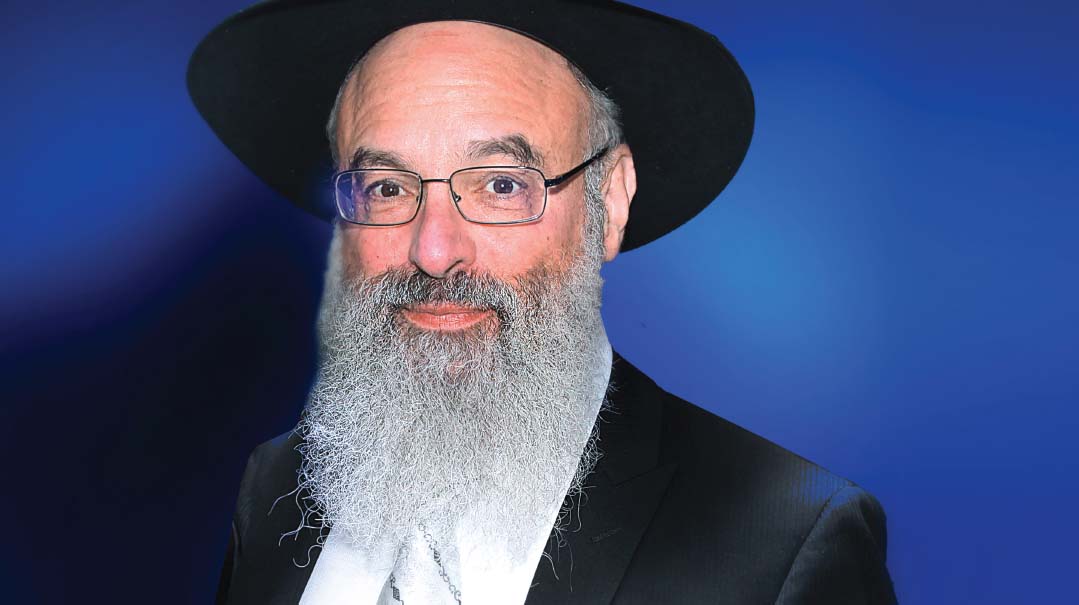Built with Love and Loyalty
| September 29, 2021Passaic's Rabbi Heshie Hirth was the ultimate Torah builder

Photos: Family archives
When Rabbi Heshie and Ettie Hirth arrived in Passaic in 1978, there were no kosher stores, only a declining marginally Orthodox population that was remnant of a bygone era, and no viable chinuch options. There was, however, a tiny starting-out yeshivah gedolah, whose rosh yeshivah would entrust Rabbi Hirth with the building blocks of the kehillah over the ensuing decades.
By the time Rabbi Hirth passed away in the beginning of Tishrei 43 years later, the Passaic-Clifton community was thriving. Yeshiva Ktana of Passaic — the school Rabbi Hirth had founded with just four dozen kids — boasts four divisions and is now the second-largest private school in the State of New Jersey. Three mesivta high schools, a world-class yeshivah gedolah, half a dozen kollelim, a plethora of shuls, and a dizzying array of chesed organizations all call Passaic-Clifton their home.
For over four decades Rabbi Hirth built, developed, and ran the Passaic-Clifton community, with seichel, love, and loyalty — loyalty to his ever-increasing staff, loyalty to his beloved rosh yeshivah, and loyalty to Hashem, His Torah, and His people.
Sent to Build
It was in the early 1930s when Mr. Yechiel Hirth, his parents, and siblings escaped their native Ukrainian town and headed for the US. Industrious and talented as Mr. Hirth was, his jobs would inevitably end on Friday afternoon, when he took leave for Shabbos. After several disheartening weeks, he and his brother finally found steady work in a hardware store whose owner was willing to overlook the Saturday absence in exchange for the two valuable assiduous employees. When the store owner announced he was closing up his shop and selling the building, Mr. Hirth and his brother decided to purchase the property and start their own real estate company — a venture that would prove to be successful and allow the family to support needy institutions and individuals with utmost generosity. Yechiel Hirth married Esther Landgarten — a fellow immigrant from Poland — and together, the young couple settled on Manhattan’s Lower East Side. Their son Heshie, their fourth child, was born in 1950. This was before the American Orthodox community came to appreciate the value and significance of Torah learning, yet Heshie forged his own path ahead that included the highest reverence for Torah study. It was an outlook that he would maintain for the rest of his life.
He enrolled in RJJ for high school, and it was in those years that he was exposed to many great Torah personalities. When he reached beis medrash age, the young bochur headed to Rav Levi Krupenia’s Kamenetz yeshivah, which was located in the small hamlet of Woodridge, New York. One of the maggidei shiur there was Rav Meir Stern, a young talmid chacham and star disciple of both Rav Aharon Kotler ztz”l and Rav Berel Soloveitchik ztz”l, who had just begun teaching American bochurim.
During those years that Heshie Hirth had learned under Rav Meir Stern, the seeds of a partnership were planted — one that would color the Torah landscape in America and establish the hitherto sleepy northern New Jersey town of Passaic into an ir v’eim b’Yisrael, home to hundreds of families of bnei Torah.
After Heshie married Ettie Brisman, the young couple traveled to Eretz Yisrael where Heshie learned in Yeshivas Brisk, and before returning to the United States, he was advised by Rav Berel Soloveitchik to go follow his rebbi, Rav Meir Stern — who had since moved to a small town in New Jersey called Passaic.
It was an unconventional move: The community was pretty much in its infancy, and the yeshivah had only a handful of talmidim. But the arrival of Heshie and Ettie Hirth to the Passaic-Clifton community meant the Rosh Yeshivah would have a loyal soldier — a talmid who was smart, successful, capable, and talented. Most of all, though, he was “geshikt.” As Rav Mordechai Hirth, Rabbi Hirth’s older brother, noted in his hesped, the Yiddish word “geshikt” means more than just skilled — geshikt also means “sent.” Sent to accomplish, sent to build, sent to achieve the task at hand without losing focus.
Oops! We could not locate your form.







